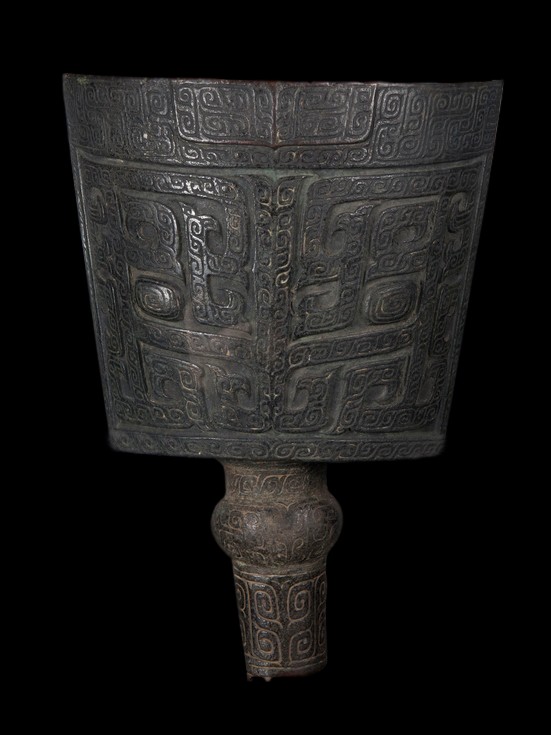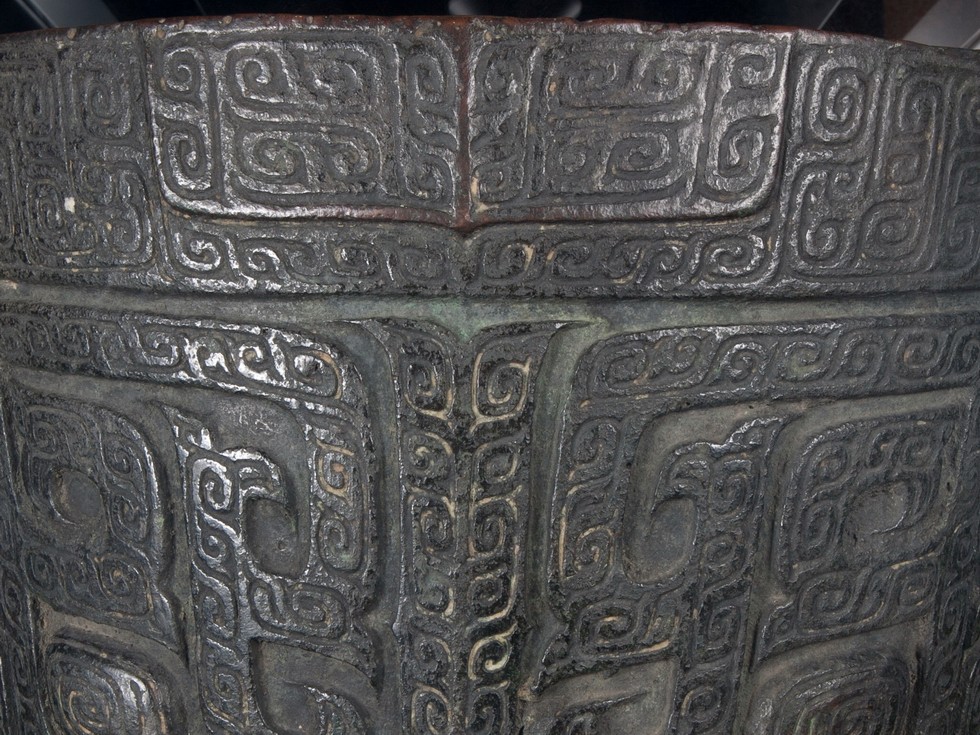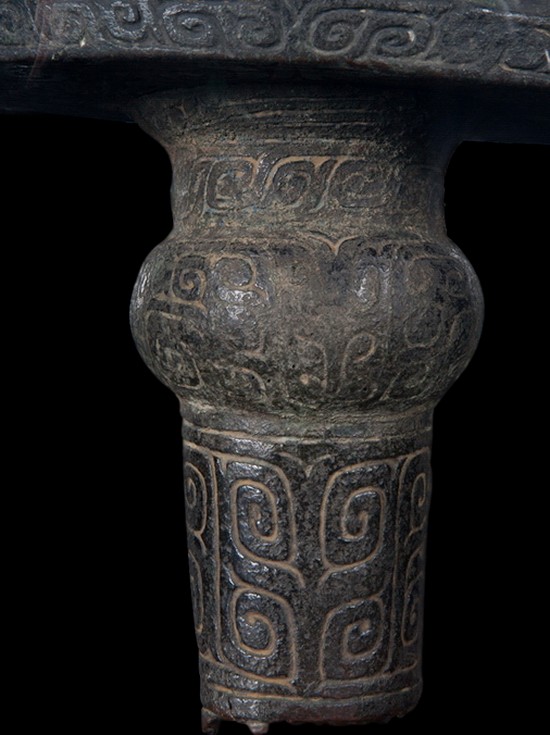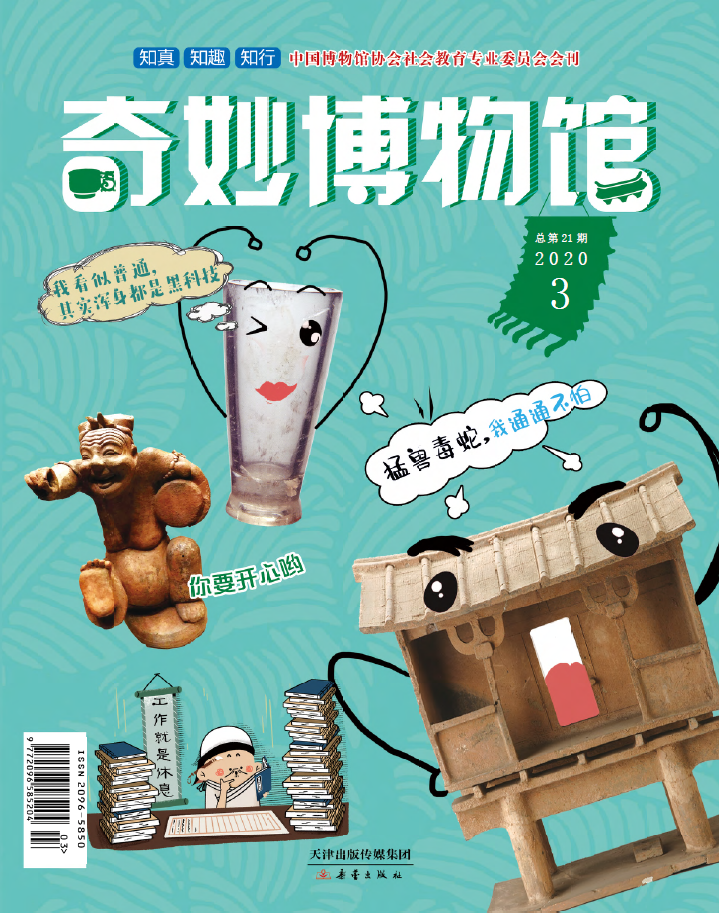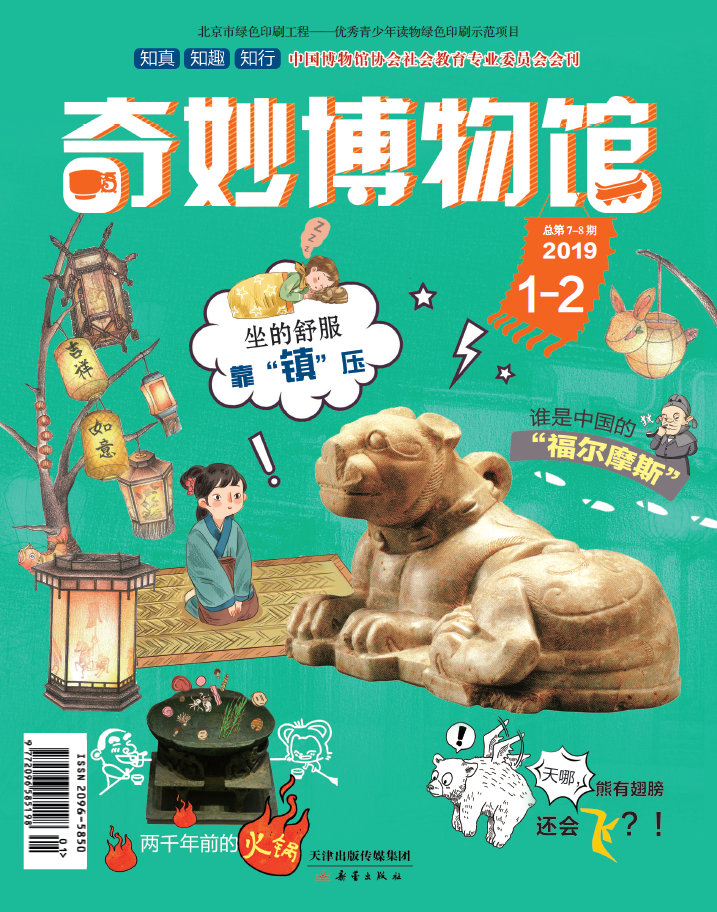铙作为一种乐器名,始见于《周礼》,其书《地官?鼓人》曰:“以金镯节鼓,以金铙止鼓。”郑玄注:“铙如铃,无舌,有秉,执而鸣之,以止击鼓。”铙形制像铃,但无舌而有中空之柄,属手执敲击乐器,其用途是在退军时敲击之止鼓,以示退却。
铙的外形酷似两片合起来的瓦块,口朝上,上宽下窄,座下有一个圆柱形的甬(即柄)。铙是我国最早使用的青铜打击乐器之一,是流行于商代晚期的打击类礼乐器,除了上文所说铙最初的功能为军中传播号令之用,其主要用途是在祭祀祖先和自然神明时进行敲击演奏。演奏时铙口向上,将中空的柄部安上木把,置于木座之上,以木槌敲击铙口中间及两侧部位即可发出洪亮悠长的声音。
天津博物馆藏此件商饕餮纹铙,口纵23.8厘米,口横35.5厘米,通高47.5厘米。此铙为合瓦形,形体高大厚重,口沿微呈凹弧形,两侧自下向上斜张,粗柄上有突起的一周,柄中空并与内腔相连通。铙体前后均饰有饕餮纹,内填雷纹,柄及铙顶部也遍饰雷纹,整体纹饰精美粗犷,生动立体。
Taotie design nao(percussion instrument)
Shang dynasty(c. 1600-1046 BC)
Height overall 47.5 cm
The large, sturdy body of this nao is in the shape of two joined roof tiles. Its rim is slightly concave, and there is a protruding band around its thick handle. The handle’s hollow interior is connected to the body of the instrument. The decoration on the nao includes taotie designs, the interior of which is filled with cloud and thunder patterns, with thunder patterns across the handle and upper edge. The overall decorative scheme is finely executed and uninhibited, lending the piece a vital and three-dimensional character. Naos were a ritual percussion instrument popular during the late Shang dynasty.



